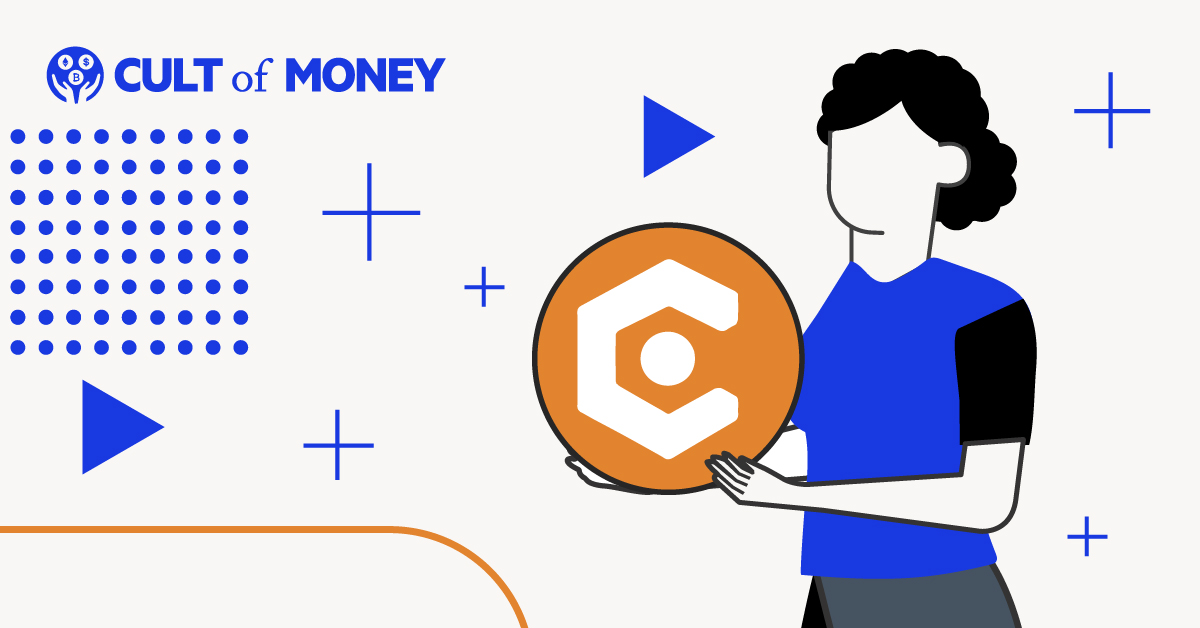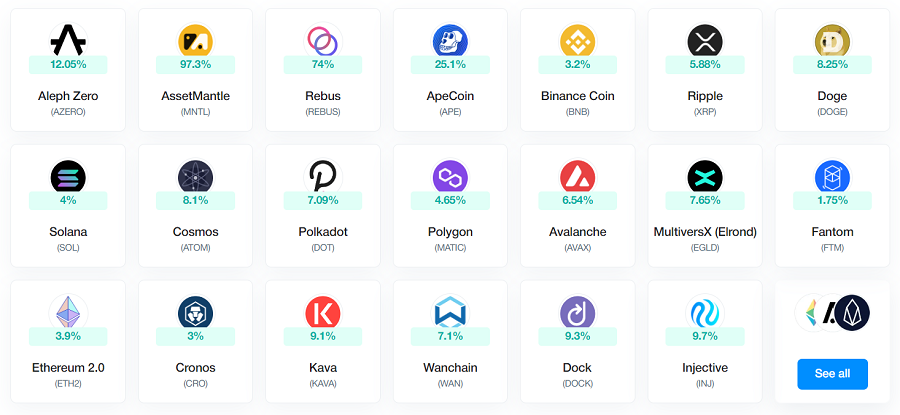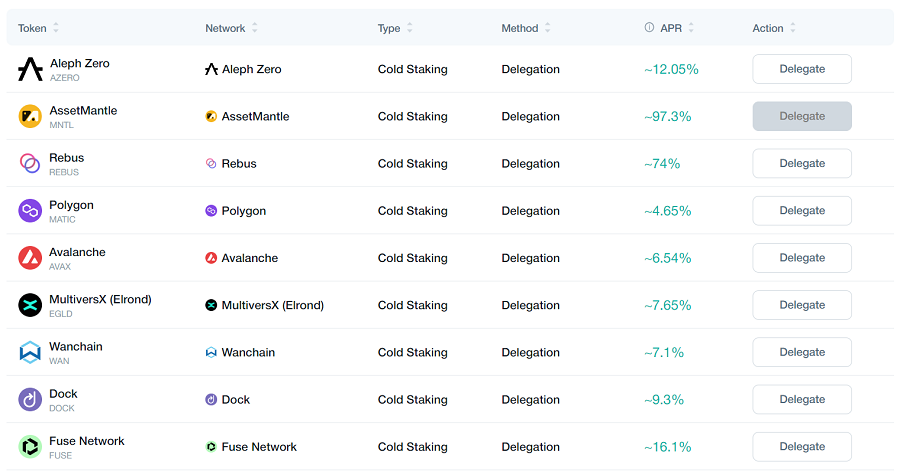
In the crypto world, many platforms often take a hardline between being centralized or decentralized. And this can often make it feel like you have to choose between ownership and features, which is frustrating for investors.
That’s why MyContainer, a popular staking platform, is so unique. It offers both centralized and decentralized staking features, as well as several ways for its customers to gain crypto rewards.
Our MyContainer review is covering exactly how the platform works, what its fees are, and how to ultimately decide if you should open an account or not.

Quick Summary
- Supports 120+ assets
- Competitive staking rates
- Also offers crypto cashback and airdrops
Pros:
Cons:
About MyContainer
MyContainer is a cryptocurrency staking and node hosting platform that lets users earn rewards in a variety of methods. The company began in 2018, and since its inception, it has grown to support over 120 cryptocurrencies and stablecoins.
If you’re familiar with other popular staking platforms like Allnodes or YieldFlow, then MyContainer should feel quite familiar.
Its main service allows crypto holders to generate yield with their assets through staking. And the company also offers several other ways to trade cryptocurrencies and generate passive income.
MyContainer Features
What makes MyCointainer unique is that it offers both custodial and non-custodial options to generate yield. And it has a few other features that let you earn free cryptocurrency without much effort.
Crypto Staking
You can currently stake over 100 assets with MyContainer, and the minimum amount to stake is only 1 Euro, so it’s quite beginner-friendly. There’s also no lock-up period, and to begin staking, you simply deposit your crypto into your MyContainer wallet or purchase crypto to stake using its exchange.
From there, you earn daily interest on your assets, and according to MyContainer’s website, the average APY is approximately 14%.
Some popular assets you can stake on MyContainer include:

Just note that MyContainer requires depositing crypto into its wallet to begin staking with this method. This means this feature is centralized, so keep this in mind.
Cold Staking
If you prefer using your own wallet to stake and want a DeFi alternative, MyContainer has you covered. With its cold staking service, you can delegate your coins to validator nodes and stake coins right from your own wallet instead.
Using these decentralized pools means you always have control over your own crypto and private keys. Overall, I like that MyContainer has both centralized and decentralized staking options depending on your preferences.

The main downside is that there are fewer available assets to stake with cold staking. But you can still generate yield with dozens of assets, just not some of the most popular coins like ETH or SOL.
Exchange
MyContainer has its own exchange feature that makes it easy to buy and swap cryptos. There’s currently over 360 trading pairs, and the platform works with 13 other major cryptocurrency exchanges to get the best rates possible.
One unique feature of MyContainer’s exchange is that you can receive small bonus amounts of various tokens for making trades. And like its staking service, the minimum exchange amount is only 1 Euro.
Crypto Cashback
Another unique MyContainer feature is its cashback shopping portal that pays you for shopping online at popular brands.
To earn, all you have to do is download MyContainer’s mobile app or download its browser extension for Google Chrome. From there, you earn USDT cashback from 2,300+ partner brands when you shop through MyContainer.
This process is similar to using popular shopping rewards platforms like Rakuten and Honey. Except instead of earning cash, you get USDT.
Some notable brands MyContainer partners with include:
- Alibaba
- AliExpress
- Best Buy
- Kinguin
- Gap
- Udemy
- Zaful
Cashback rates range anywhere from 1% to 30% or more depending on the store. Partners and rates are also subject to change, but if you have some online shopping coming up, you can likely earn some free USDT by shopping through MyContainer.
Airdrops
One final way to earn reward with MyContainer is to participate in token airdrops the platform promotes.
Airdrops are a popular tactic in the crypto community that new tokens and companies use to promote themselves. By completing a series of short tasks or just opting-in for airdrops, you can earn some free crypto, NFTs, and other rewards.
At the time of writing, MyContainer is promoting several airdrops for new NFT and crypto projects. Many of them just require following the project on Twitter and Facebook to join, so it’s an easy way to snag free digital assets.
Just note that many airdrops are for brand new projects with no track record. So while you can get free crypto or NFTs, there’s no guarantee your assets will ever be worth anything.
MyContainer Pricing & Fees
Creating a MyContainer account is free. For fees, you pay a percentage of your staking rewards to MyContainer in exchange for using the platform. According to its website, the average fee is 2% but in many cases doesn’t exceed 1% and can sometimes be fee-free depending on the token.
As for its exchange, fees vary depending on the trading pair and market condition. But since MyContainer works with 13 major exchanges, it can usually secure competitive rates on trades.
Also note that while MyContainer doesn’t charge deposit fees, you can still pay network fees depending on network condition and the token. And you also pay variable withdrawal fees that depend on the asset, which MyContainer explains on its fee page.
MyContainer Alternatives
MyContainer is compelling because it has competitive rates and also has custodial and non-custodial staking options. But it’s just one of many staking providers you can consider:
- YieldFlow: Another beginner-friendly staking platform that also offers lending and liquidity pools.
- Bake (Cake DeFi): Like YieldFlow, Bake lets you generate yields with staking, crypto lending, and liquidity mining.
- Allnodes: One of the best decentralized options for staking and node hosting.
Account Opening Process
You create a MyContainer account by entering your email and choosing a password. Afterwards, you need to verify your email address and the complete account verification to use the platform.
Verification is a requirement because MyContainer follows know your customer (KYC) rules. Information you provide to verify your account includes:
- SMS verification
- A photo of government-issued ID
- A selfie
- Proof of residence (like a utility bill or something similar)
This might seem invasive, but these days, it’s quite standard for centralized platforms to ask for this information.
Safety & Security
MyContainer has several steps in place to help increase business and platform security for its customers.
For example, the company partners with Fireblock to hold its customer’s assets and to keep them safe. Fireblock is one of the leading crypto custodians that works with massive exchanges and enterprise clients like eToro, MoonPay, and dozens of others.
Having KYC requirements in place also helps protect the platform as a whole from bad actors and money laundering. And customers can use features like 2FA to secure their accounts.
Customer Service
You can reach MyContainer’s customer service team by emailing [email protected].
Alternatively, the website and mobile app have a support chat option you can use to get in touch. And there’s even a Discord and Telegram group where you can ask questions and stay up to date with company news and new features or changes.
The Bottom Line
These days, many staking platforms take a hardline between being decentralized or centralized. But with MyContainer, you get the best of both worlds.
Investors comfortable with custodial staking can take advantage of its wide range of supported assets and competitive yields. And DeFi advocates can still generate yield white maintaining control of their crypto.
It’s still worth shopping around other platforms to compare rates. But if you want a beginner-friendly way to stake and earn free crypto rewards, MyContainer could be worth trying.

Tom Blake is a personal finance writer with a passion for making money online, cryptocurrency and NFTs, investing, and the gig economy.
